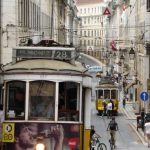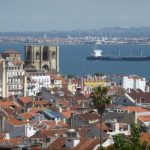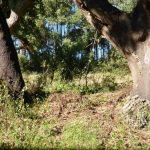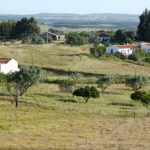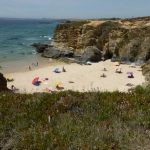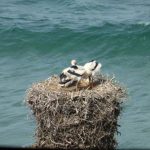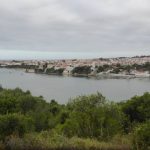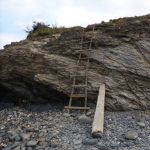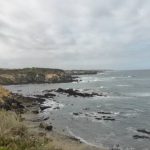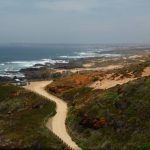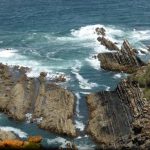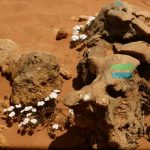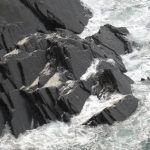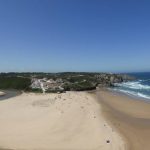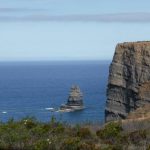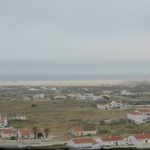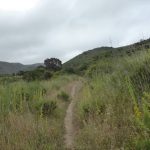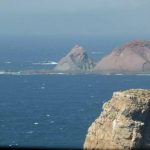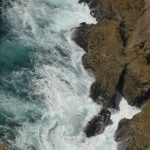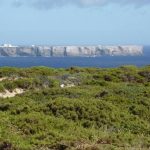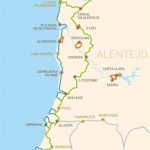June 2016. After a couple of days of sightseeing in Lisbon I started out on the Rota Vicentina from Santiago do Cacém, approximately 150 kilometers south of Lisbon, where I had arrived by bus the day before. I soon found myself walking through a billowing arid landscape covered with cork oak trees. Every tree has a number painted on it that shows in what year the outer layer of bark last was stripped off. Forty kilometers later after a long day in well over thirty degrees celsius I arrived to Cercal quite exhausted.
The temperature the next day was the same as the day before so I decided to limit the walk to eighteen kilometers. After half the distance fine white sand started to show up on the trail as a sign that I was approaching the Atlantic Ocean. I found a nice hotel in Porto Covo by the coast. One thing I have noticed in Portugal is that cash is king for real. Most hotels don’t accept credit cards for instance and that is a big difference compared to Spain where I have walked a lot.
From Santiago do Cacém to Porto Covo I had been following the inland trail of Rota Vicentina which is called the Historical Way. From Porto Covo I shifted to the Fishermen’s Trail that closely follows the coastline. Between Porto Covo and Vila Nova de Milfontes that meant walking in sand dunes and on cliff edges close to the ocean. I went by a stork’s nest built on a tall pillar of stone twenty meters out from the rock. There were three young birds in the nest. In Vila Nova de Milfontes I met a woman who was involved in creating and maintaining the Ruta Vicentina and she was very interested to have my feedback. I spent the night in a rented room in a private villa. That is a very common form of accommodation in Portugal.
The next day I pushed on by walking two stages and ended up for the night in Zambujeira do Mar. Compared to the days before this walk went more inland and went through pine forests and grass-covered dunes.
A couple of kilometers before turning inland to Odeixe I had a magnificent view from high up overlooking a beautiful bay with a gigantic beach and lots of people. I had lunch in Odeixe and then continued to Aljezur where I spent the night in a dormitory together with ten (other) youngsters.
In Odeixe I met with the Historical Way once more and that meant inland walking once more. This was another two-stage day that took me to the surfer’s paradise of Carripateira where I once more found a private room in a villa in the outskirts of the village. The village center had a couple of open restaurants and bars and there I ate what I think must have been the best burger I have ever eaten, a Sevilla.
When I reached Vila do Bispo I felt sea breezes in my face again and in the afternoon I reached Cabo de Sao Vicente which is the Portuguese equivalent to Lands End, Finisterre, and Finistère. There one has a magnificent view from an elevated position overlooking the vast Atlantic Ocean and the rugged coastline to the north and to the east. The place also has an excellent outdoor bar and after a stiff gin and tonic the last four kilometers to Sagres and my accommodation for the day was a piece of cake.


